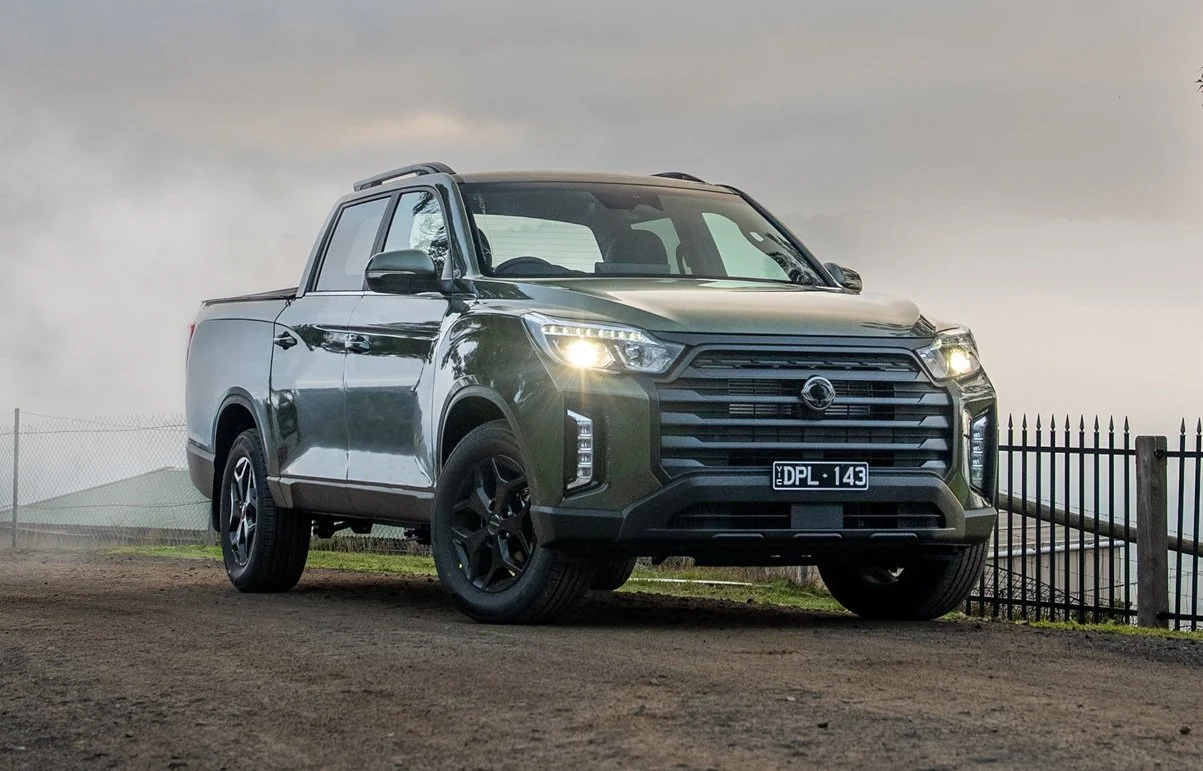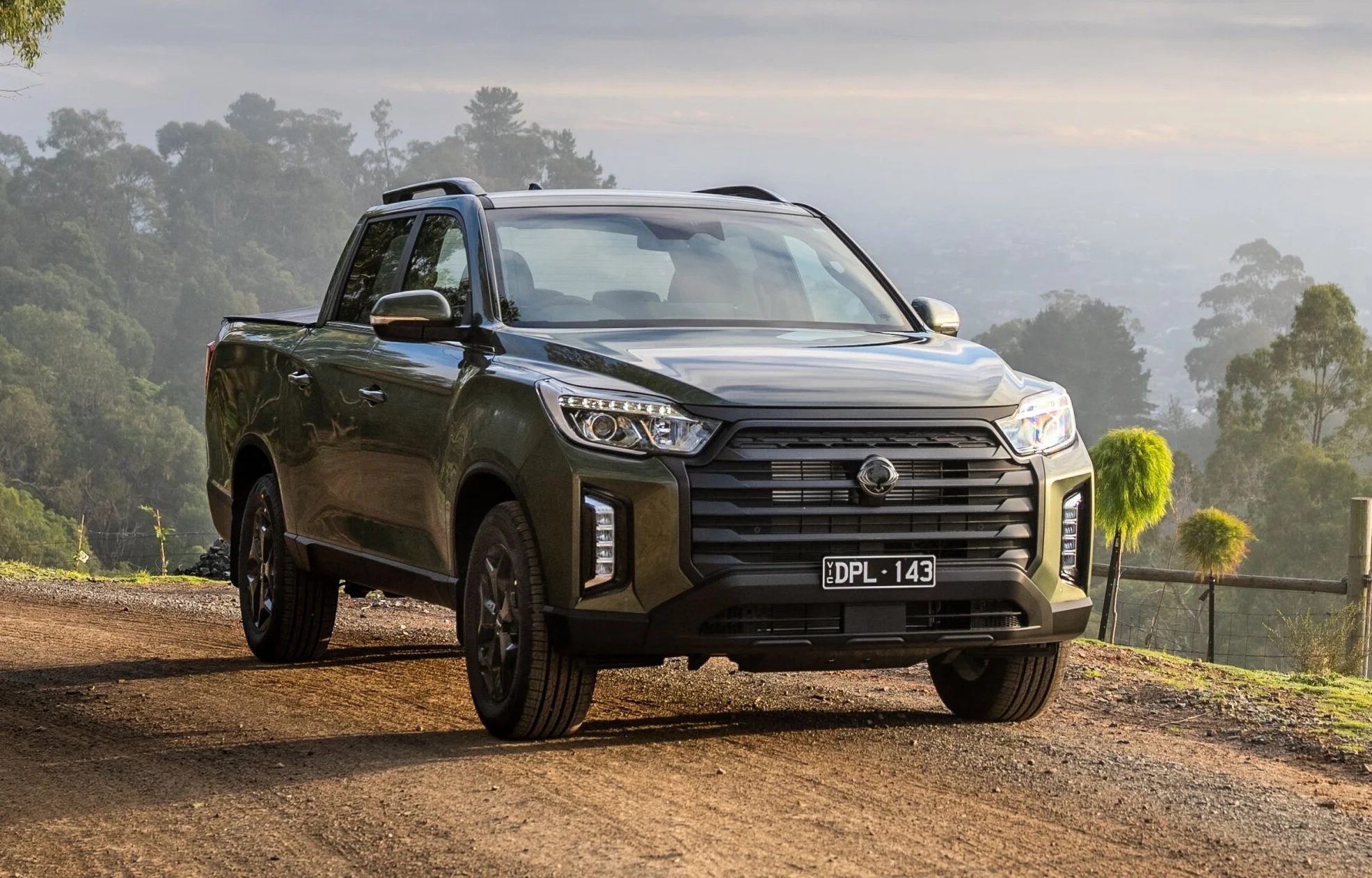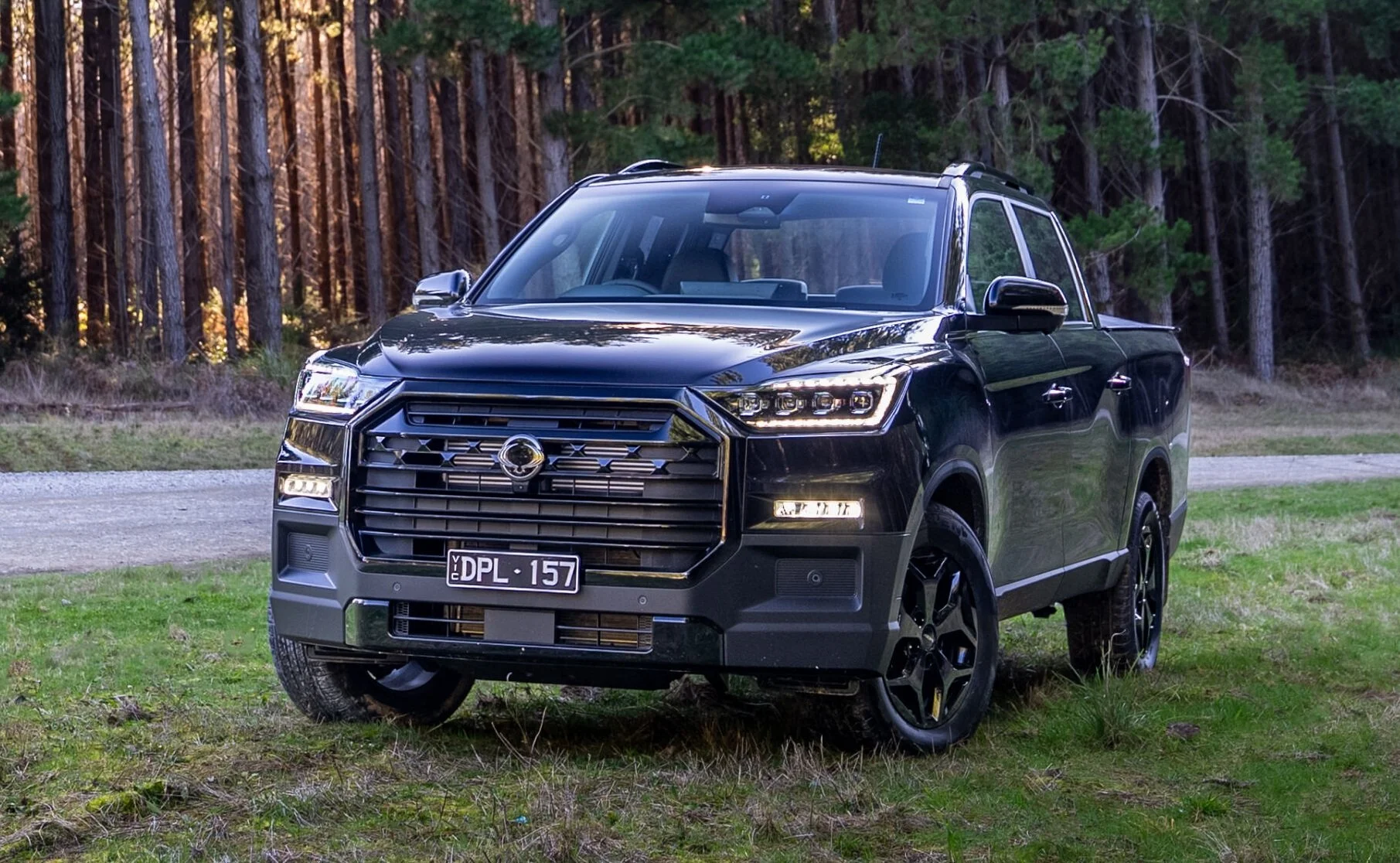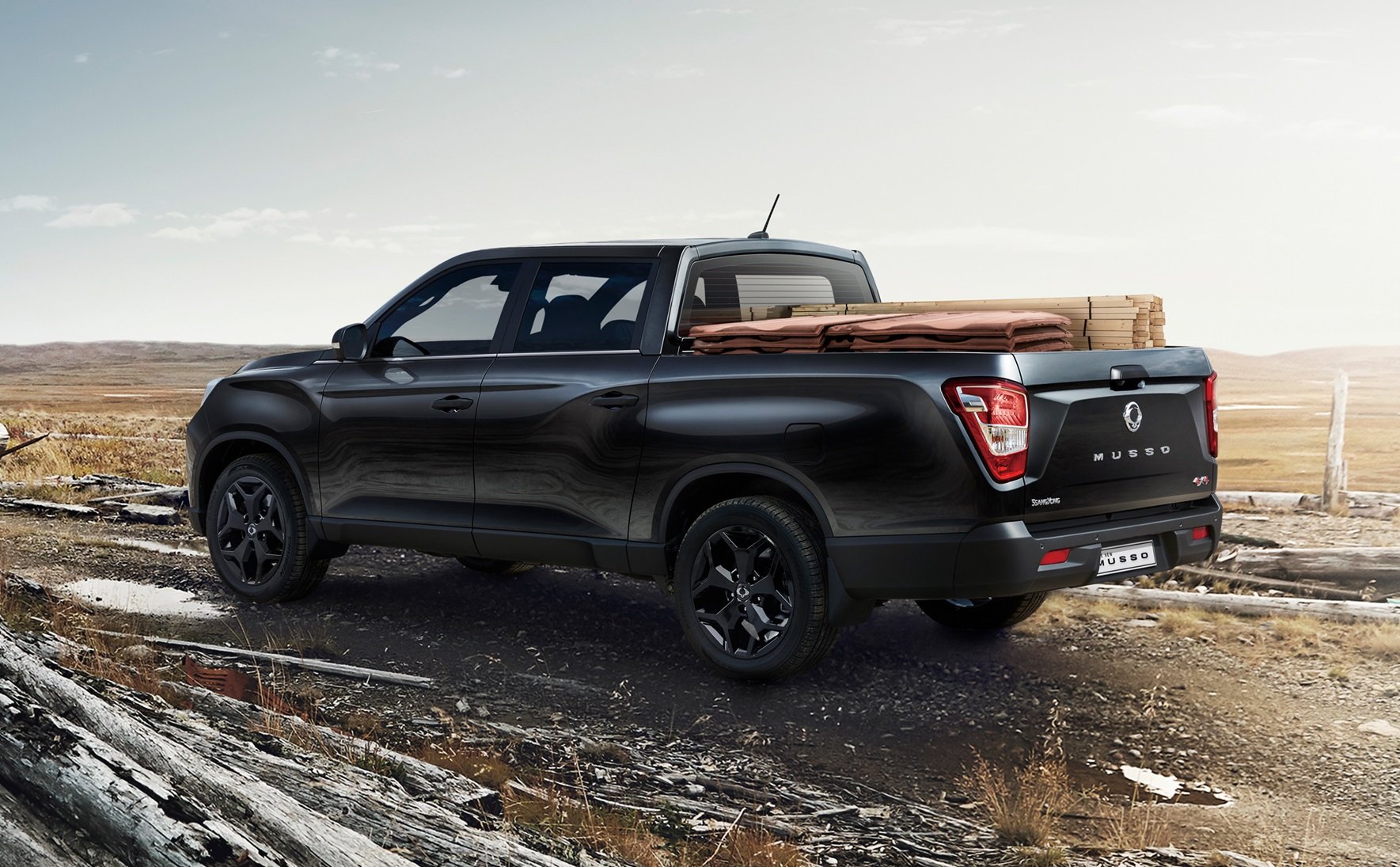KGM Musso review and buyer’s guide
If you need an affordable and extremely good value dual-cab diesel ute with all the features and good-enough performance for a wide range of work, the KGM Musso (nee SsangYong) offers insane bang for your buck. But there’s a big caveat to your long-term ownership…
The SsangYong Musso is a ute with a new brand name – now calling itself KGM – which might suggest it can support the typical ownership lifecycle.
The Korean brand doesn’t have the best track record for staying afloat here in Australia, and sales are dismal compared with the big-name utes. But the brute force of its value proposition might be enough to sway you, and there are savings to be had here.
SsangYong does have a cult following here and the Musso and Rexton remain the brand’s best chances of commercial stability, which comes long before ‘success’, for obvious reasons.
If you’re interested in buying a new SsangYong Musso in 2026 or beyond, or if you’re simply conducting research to build a shortlist, this report will give you more than just the regurgitated press kit. You’ll get some genuine positive and critical analysis to help you make an informed choice between a Musso or one of the other dual-cab utes.
Let’s get into the nitty gritty and see if a Musso is right up your alley, or if you should run in the opposite direction for something conventionally Japanese, Chinese or the also-Korean made (but heavily Australian influenced) Kia Tasman.
The refreshed Musso line-up involves an ultra-light interior update with the same dashboard and 12.3-inch touch-screen only being added to by additional features like reach-adjustable steering in the ELX (how revolutionary), dual-zone climate, heated steering wheel and crazy-bright HID headlights in the Advance, and garnish like sunroof, 8-way electric seats, and heated rear outboard seats for the Ultimate.
Externally you do now get factory roof rails on the ELX - yay - a much tougher looking exterior on the Advance thanks to black grille, 19-inch alloys and LED headlights. The improvements made to fine-tune and reduce noise and vibrations in the cabin while driving with the previous version seem to be carried over, and that’s okay because we don’t want to fix something that was quite good and indded un-broken.
The Advance variant is the one you want for comfort thanks to its coil-sprung rear suspension, and other bits and pieces. It’s a premium-value type of model positioned right in the middle of the line-up. But if you want maximum payload, you’ll want the Advance XLV variant with an 880kg payload instead of the 790kg in the regular Advance.
Sales of SsangYong Musso in 2024 were pretty poor. By the end of the calendar year, sales were barely 4000 units. The nearest model on sales equivalence was the LDV T60 on 5800+ units. In terms of ranking the dual-cab utes, the Musso is 11th - it doesn’t even crack the top 10, and there are only 12 models on sale.
This typifies the primary conflict you have to resolve when it comes to making this purchasing decision. Musso simply isn’t very popular, and in spite of its ‘rebranding’ to KGM from SSangYong - an additional few letters that mean effectively nothing to Australian consumers - it’s a foregone conclusion that the Musso won’t hold its value very well over the next five years. (We’ll get into that more below.)
But if you simply need a decently-built and very affordable dual-cab ute to throw stuff into the back of, and maybe move some people, and you’re not concerned about the big brands or a few hundred or thousand bucks in the future, the Musso does have some good things going for it in this respect.
It truly is astounding value. Driveaway, you can have the biggest, longest, best-equipped Musso without spending more than $53,000. Some of the popular dual-cab utes don’t even start their pricing with a ‘5’. A Ranger Wildtrak is about $25,000 more expensive. That 25 grand buys a lot of diesel to offset that additional 7 per cent of claimed combined fuel consumption in a top-spec Musso XLV ‘Ultimate Luxury’.
Maybe you’re not struggling with the cost of living situation many people find themselves in these days (because here you are buying a $50K ute, notionally), but suppose you do have a small business that needs to watch its spending very carefully.
If you’re not pulling an enormous trailer and/or carrying a vast array of heavy equipment in the tray, do you really need to spend all that money on the big-name utes?
FEATURES & PRICING
Three variants are available, spanning from the ELX, Adventure, and top Ultimate. All three can be had in long-wheelbase form, called the XLV Pack, extending the wheelbase by 110mm and the overall body length by 314mm. The idea here is more space in the tray bed, which is 1600mm long instead of the standard 1300mm.
Prices kick off from $39,000 for the base ELX and top out at $46,500 for the Ultimate with the XLV Pack. That’s drive-away pricing as well. It’s easy to see why so many Australians have bought one of these purely as the price tag is so tempting, especially against the typical players in this field.
But being one of the cheapest doesn’t instantly mean you should sign up today. There are plenty of areas and potential concerns you should consider first. If you’re doing a lot of towing, for example, it is best to stick with the base ELX with the XLV Pack as it is the only one with leaf springs at the back.
All variants come with twin 12.3-inch screens inside (multimedia and instrument cluster), Apple CarPlay and Android Auto, cruise control, leather-wrapped steering wheel, LED running lights, a full-size alloy spare wheel, and a rear-view camera.
The main safety tech is there as well, including a driver attention warning system, lane-departure warning, and autonomous emergency braking (AEB). ANCAP has not conducted a crash test on any Musso model.
MUSSO ELX | $42,500 (driveaway, approx.) | 4X4 auto
MUSSO ELK XLV | $44,000 (driveaway, approx.) | 4X4 auto
Starts with:
Front & rear parking sensors
Rear A/C air vents
Headlight levelling, Automatic on/off headlights
LED Daytime Running Lights, Front fog lights
Assisted tailgate operation
Cruise control, Manual A/C
Remote control keys with central locking, Push button start/stop
auto-dimming rear view mirror
USB-C Ports - 2 front
Speed sensing front wipers, Rain sensing front wipers
Fabric seats
12.3-inch Smart Audio with touchscreen, Apple CarPlay/Android Auto, 6-speakers
Autonomous Emergency Braking (AEB), Forward Collision Warning (FCW, Lane Departure Warning (LDW), Safety Distance Alert (SDA), Smart High Beam (SHB), Front Vehicle Start Warning (FVSW, Driver Attention Warning (DAW)
Electric power steering (Hydraulic PAS for XLV)
Reach adjustable steering wheel
Lane Keeping Assist (LKA) (deleted for XLV)
HID headlights (Projector for XLV)
1010kg payload for XLV
Silver roof rails
MUSSO ADVANCE | $46,500 (driveaway, approx.) | 4X4 auto
MUSSO ADVANCE XLV | $48,000 (driveaway, approx.) | 4X4 auto
Adds:
18-inch black alloy wheels
Black front grille
HID headlights
LED Front fog lights
Door mirrors with puddle lamp
Telescopic adjustable steering column
Leather look seats, heated & ventilated (cooled) front seats
Dual zone automatic climate control
Blind Spot Warning (BSW)
Rear Cross Traffic Warning (RCTW)
Lane Change-collision Warning (LCW)
Safety Exit Warning (SEW)
Heated steering wheel
Privacy rear door glass
MUSSO ULTIMATE | $51,500 (driveaway approx.) | 4X4 auto
MUSSO ULTIMATE | $53,000 (driveaway approx.) | 4X4 auto
Adds:
Heated steering wheel
HID Headlights with integrated LED turn signal
3D 360° camera
Special design black front bumper and grille
Black interior highlights (A/C panel, steering wheel bezel, facia trim)
Dual zone automatic climate control, powered sunroof
Leather look seats, heated rear outer seats
Driver's seat power adjustment with lumbar, Passenger seat power adjustment
Powered sunroof
LED headlights
Sequential front indicators
8-way powered front seats
Powered driver lumbar support
Heated rear outer seats
Walk-up welcome system
Touch-sensing front door locks with walk-away auto-door locking
Just looking at the equipment you get, it’s easy to see why some people are drawn to the Musso’s value proposal.
What’s also quite appealing is the 7-year warranty which SsangYong also extends to commercial buyers, not just private buyers.
INTERIOR
This is quite a basic and fuss-free cabin. Aside from the twin digital screens across the dash, there really isn’t much to it. In a good way and bad way. Because, on one hand it is very quick to acclimatise to, so you don’t need to worry about learning where everything is. But on the other hand, it looks quite bare and basic.
SsangYong introduced a new climate control touch-screen panel recently to modernise the look, with physical buttons for fan speed and climate on/off, and that’s about it. The driveline mode switch on the console matches the simplicity of the cabin character.
Passenger space is good, especially if you go for the XLV Pack. You’ve got a wide centre console with decent storage, and legroom in the back is impressive for this class. Climate vents are presented in the back, so that’s good to see, and there is an arm rest with cup holders.
Interestingly, the rear bench sits on legs which means you have some storage underneath the seat. It’s possible to flip down the rear seat backrest as well allowing access to the three baby seat anchor points mounted on the back wall.
I'll help you save thousands on a SsangYong Musso
Just fill in this form.
No more car dealership rip-offs.
Greater transparency.
Less stress.
ENGINE
Like all of the cheap rivals, the Musso’s engine does lack in power and torque compared with the veterans from Japan/Thailand. All variants are propelled by a 2.2-litre turbo-diesel four-cylinder (nothing to do with Hyundai’s identically-sized unit), producing 133kW and 420Nm.
It’s more powerful than GWM’s weak 2.0-litre offering (120kW/400Nm), but not as powerful as the LDV T60’s 2.0L (160kW/500Nm). However, power and torque aren’t the only drawbacks. Overall efficiency on all three engines is very poor.
Let me explain. The 2.2L unit in the Musso produces just 133kW yet the official consumption rate is 9.0L/100km. The 2.4L Mitsubishi Triton, producing 150kW/470Nm, consumes 7.7L/100km. That’s more power and torque yet it uses less fuel. Even the Isuzu D-Max’s big 3.0L unit consumes 8.0L/100km. Just keep in mind that the Triton GSR is over $63,800 and that $13,000 could buy you a lot of diesel for your Musso.
These are the lab-tested figures, keep in mind. Real-world averages are going to be amplified versions of these numbers. The GWM Cannon is the worst in this department, though. Its puny 2.0L consumes 9.2L/100km yet only develops 120kW. LDV isn’t much better, rated at 9.2L/100km, but at least it kicks out more grunt.
It’s also worth mentioning here that the previous version Mitsubishi Triton managed quite okay with just 130 kilowatts.
TRANSMISSION
Paired up to the 2.2L is a six-speed automatic. It doesn’t offer a wide range of ratios like some rivals, but, as we’ve seen with the Triton, D-Max, and HiLux, six gears is enough for a workhorse. With a focus on strong torque, these powertrains can pull through longer gears much easier than a typical SUV or hatchback. Final drive ratios are usually much shorter as well, adding mechanical torque.
The six-speed here is an Aisin unit with SsangYong’s tuning. Aisin is a transmission company owned mostly by Toyota (about 32 per cent), with the HiLux, D-Max and Triton all using an Aisin unit as well.
Calibration is almost as important as durability with automatics, and in the Musso there are some moments where the gearbox tries to remain in higher gears even though you might prefer it to kick-down. In that sense it is not as smooth or as intuitive as the calibrations applied in those more expensive rivals.
The Musso features a selectable rear-/four-wheel drive system, with a dual-range transfer case offering low-range for tough conditions. There’s also an “auto-locking” rear differential. This means it will lock itself when it thinks it is necessary. A manual/switchable locker is preferred as it allows you to control when you want the rear left and right wheels locked in speed.
DRIVING
With that 2.2L engine and circa-2100kg kerb weight, the power-to-weight ratio is actually not too bad for the diesel ute segment. Acceleration across the 0-100km/h sprint, for example, can be achieved in around 10.5 seconds. That is on par with the big players that offer more power/torque.
This engine is quiet and smooth, much like the 2.2L featured in Hyundai-Kia products, and it doesn’t produce the same level of noisy clatter as some rivals such as Navara and D-Max. Most of the time it is just like driving an average diesel SUV in terms of engine refinement and noise level.
Peak power isn’t available until 4000rpm. That is high for a light-duty truck like this. It cruises without much effort nonetheless, and max torque pushes in from just 1600rpm, so you rarely miss out on what the engine has to offer.
Around town the Musso is relatively easy to drive and live with, but if you have opted for the XLV length then you will need to make special allowances in normal marked-out parking spaces; the rear end needs to overhang the kerb or garden or whatever is behind it.
Visibility is very good thanks to the basic form of the cabin design, with thin pillars and a clear view through the large rear windscreen. The flagship Ultimate variant adds a surround-view camera system to help out during parking.
It’s not the most communicative steering and in fact it feels quite cold and rudimentary. There is some weight to it but not much engagement, even for this class. Even so the handling is at least average for this segment so it is capable of driving down a windy road without making you feel ill. Body roll is minimal but the ordinary Nexen tyres don’t provide the best wet weather traction.
As for real-world fuel economy, you can expect an average of around 10L/100km with typical day-to-day driving. That’s about average for a four-cylinder diesel 4x4 ute today. If you expect more from it in terms of performance and push it regularly, the fuel level seems to drop quicker than some rivals under the same demands – this is where outright powertrain efficiency wins against an ageing performer like this.
FUNCTIONALITY
You’ve got two body styles to choose from with the Musso. There’s the XLV long body version offers a body that is 314mm longer than the standard one, mostly by offering a longer tray. And the Musso offers a decent payload area too.
It’s 1300mm long and 1570mm at its widest point, narrowing to 1100mm between the wheelarches. That’s 1 per cent more than the old Triton,. 35mm less than the new Triton and only 10 less than the current Ranger Wildtrak.
If you opt for the XLV, you get 1600mm of cargo length in that elongated try. That’s 2 per cent more than current Triton and 8.5 per cent more than the Ranger. It’s a fact that if you’re loading lots of long, awkward stuff, like lengths of timber, furniture, equipment, some big tool boxes - there’s more real estate for you to work with in the humble Musso.
DRAWBACKS
Aside from buying from a company with a sketchy past, the Musso is a decent package in terms of features, size, and capability. It offers a 3500kg towing capacity and a good GCM rating (6380kg for standard, 6480kg for XLV) to allow at least 700kg of payload for passengers and cargo after hooking up a 3500kg trailer (not that I would recommend doing that).
The powertrain efficiency is the main letdown, as well as the comparatively low power and torque outputs for this class. A nicer steering setup and good tyres would help improve some of this.
MAIN COMPETITORS
Think along the lines of the GWM Ute and LDV T60. Both very cheap with generous helpings of nastiness and value. Against those the Musso is the second-cheapest, behind the GWM. But all three of these carmakers often run special deals for a limited time, presenting even lower prices.
Although these utes look good on paper and come with all the bells and whistles – some of which are not available on established competitors until you spend up big on top variants – there are a number of sacrifices to endure. Such as the engine and powertrain.
RANGER
Ranger is the most popular vehicle in Australia for a very good reason: it’s dripping with sex appeal, and it’s the only mainstream ute with a big V6 diesel. (VW Amarok shares Ranger’s fundamentals, but it’s just a rebadged, overpriced clone with terrible VW customer support.)
Ranger V6 is what you buy for maximum platform performance and in V6 XLT form it’s a solid multi-purpose work vehicle and family conveyance. It does everything pretty well and that’s why they’re everywhere, including in your rearview mirror.
As a workhorse, a solid tow platform, and off-road credentials are offset by Ford’s unreliability and flaky customer support, which is where the Musso will never take a bite out of Ranger’s sales dominance.
Fortunately for Ranger owners, resale value seems strong and certainly the Musso is going to struggle in this aspect. SsangYong also claims to match Ford’s ability to flex 3.5-tonne towing limit. However, at just 2.1 tonnes in a Musso, that kind of towing is ill-advised for safety/stability, but expect strong performance, even when towing and/or carrying heavy loads.
TRITON
The Triton remains the best value ute on the market. It’s about $10,000 cheaper than rivals like Hilux and Ranger. You’ll save five figures on a Triton GSR over Ranger Wildtrak and the 400kg gain in braked towing capacity has levelled the towing field. But you’ll save even more on a Musso.
Select II transmission continues, allowing 4WD activation below 100km/h and use of AWD (4H) on high-traction surfaces. This is great for well-maintained gravel roads, steep driveways, wet sealed roads, icy conditions, and tracks.
The 2.4 turbo-diesel is powerful thanks to now bi-turbo forced induction, but 150kW is an extra 20-ish kilowatts more than the Musso offers. The once conservative 3100kg towing capacity is up to a brag-worthy 3500kg, but the macho towing arms race with other brands doesn’t mean you have to follow in a 2.2-tonne Triton. Having said that, Musso is 100kg lighter than the Triton.
Similar wheelbase, dimensions and tray specs to the Musso mean load carrying is no better in the Mitsubishi, and yet a top-spec Triton costs that $15,000 more. Heavy duty suspension is also available for serious workhorse duties on Triton, which the Musso simply can’t match. But while Triton runs rear drum brakes, the Musso does get disc brakes on all four corners.
HILUX
When it comes to resale value, nobody beats Toyota, especially in Australia - and the Musso will never upending that legacy.
Reliability, it must be acknowledged, is also a strong suit for Toyota, and again it remains to be seen, over the longer term, whether a Musso will be as reliable as a Hilux, or even a Ranger. But the Musso does put pressure on Toyota’s ability to charge over $65,000 for a nearly 10-year-old platform.
But Shark’s inability to take more than 850kg of payload does lower the safe working limit which, compared with a Hilux SR to SR5 of 940kg, is a drawback for anybody that needs their ute to work near the edge of its limitations.
The off-road ute community does also like to work on their vehicles which, to a certain degree, is still possible with a diesel Hilux in 2024. You can do that with a Musso, but there won’t be as much widespread availability of accessories and modifications. It’s hard to see the Musso putting much of a dent in the religious following Australians have for both Toyota and the Hilux. After all, faith is blind, for better or worse.
CONCLUSION
If budget is your top priority, out of the three cheapest utes on sale – LDV T60, GWM Cannon, and Musso – the Musso is the one to go for because it is capable, comfortable and the most efficient.
But the next updated versions of GWM Cannon are going to get local ride and handling tunes to suit Aussie roads and that could be a big nail in Musso’s already struggling sales figures. Keep that in mind if you’re on the fence researching at this stage of late 2025.
If you want to save up a few thousand dollars more and reach into the lower ends of the Mitsubishi Triton and Isuzu D-Max ranges, purely because you don’t trust KGM or whatever it wants to be called these days, that’s not an unreasonable justification when you’re spending fifty grand.
But saving several thousand and getting a vehicle that so far hasn’t had any big quality issues or devastating recalls worthy of oxygenation, the KGM Musso might actually be a pretty clever buy in the current car-buying climate where new, unheard of brands keep popping up with no runs on the board.
At least SsangYong, sorry, KGM has a backstory and the Musso itself goes okay without being some juiced-up powerhouse. All that equipment and reasonable performance for under $55,000.
Do you really need to spend any more than that?
















